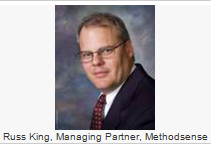The FDA and Intercenter Consultations
November 3, 2015 by
Just a few short weeks ago, Robert Califf, the US Food and Drug Administration (FDA) Commissioner nominee, endorsed an internal report that provided recommendations on how the FDA could improve reviews of combination products. Combination products include:
- Products comprised of two or more regulated components, such as drug/device, biologic/device, drug/biologic, or drug/device/biologic, that are physically, chemically, or otherwise combined or mixed and produced as a single entity – like a pre-filled syringe;
- Two or more separate products packaged together in a single package or as a unit and comprised of drug and device products, device and biological products, or biological and drug products – think of items that are “kitted” together;
- A drug, device, or biological product packaged separately that is intended for use only with an approved individually specified drug, device, or biological product where both are required to achieve the intended use – think of items that are packaged separately, but intended to be used together.
As medical science has advanced, products submitted for FDA review are utilizing increasingly complex formulations, including unique and creative combinations of drugs, biologics and devices. Because of this complexity, combination products, by definition, may require intercenter consultations with the FDA. In 2002, the FDA created a set of procedures for these consults. The procedures are for FDA staff to follow when requesting, receiving, handling, processing, and tracking formal reviews of combination products.
This creates complex regulatory challenges for both the FDA and the developer of the product. The regulatory challenge with combination products is that there are many different combinations of products, which means that no one set of manufacturing rules will apply to them all. The FDA’s draft guidance is an attempt to clarify how to apply the agency’s rules to different situations.
After an industry study revealed there were concerns over communication and coordination issues during the intercenter consults, the FDA began looking into how to improve management, timing, timeliness and workload challenges. The study team made five recommendations for improvement:
- Establish clear guidance for the review of common combination product types.
- Create new simplified processes for access to CDER’s Document Archiving, Reporting, and Regulatory Tracking System (DARRTS) and CDRH’s Image 2000 for consulting reviewers.”
- Update the Intercenter Consultative/Collaborative Review Process Standard Operating Procedures and Policies (SOPP) Manual and Intercenter Consult Request form and make them easily accessible on the OCP website.
- Create and maintain a combination-product-specific organizational chart and contact directory, keeping personnel changes current.
- Establish a mechanism for estimating time spent on intercenter consults so resources can be allocated appropriately to organizational units to assure adequate review performance.
Califf claims that efforts “consistent with report recommendations” have been made to the first four recommendations and says more improvements “will be coming this year and next.“ For those of us in the regulatory compliance arena, we’ll have to keep a close eye on this to note any changes or improvements.
About AssurX, Inc.
AssurX, Inc. provides global companies with enterprise quality management systems and regulatory compliance software solutions. AssurX’s flexible, all-in-one system automates quality and compliance related processes so issues can be centrally managed—from detection to corrective action and trend analysis. It helps collect, organize, analyze and share information to better manage risk and improve quality and compliance performance everywhere in the enterprise.
For the latest industry insights and updates go to http://blog.assurx.com


